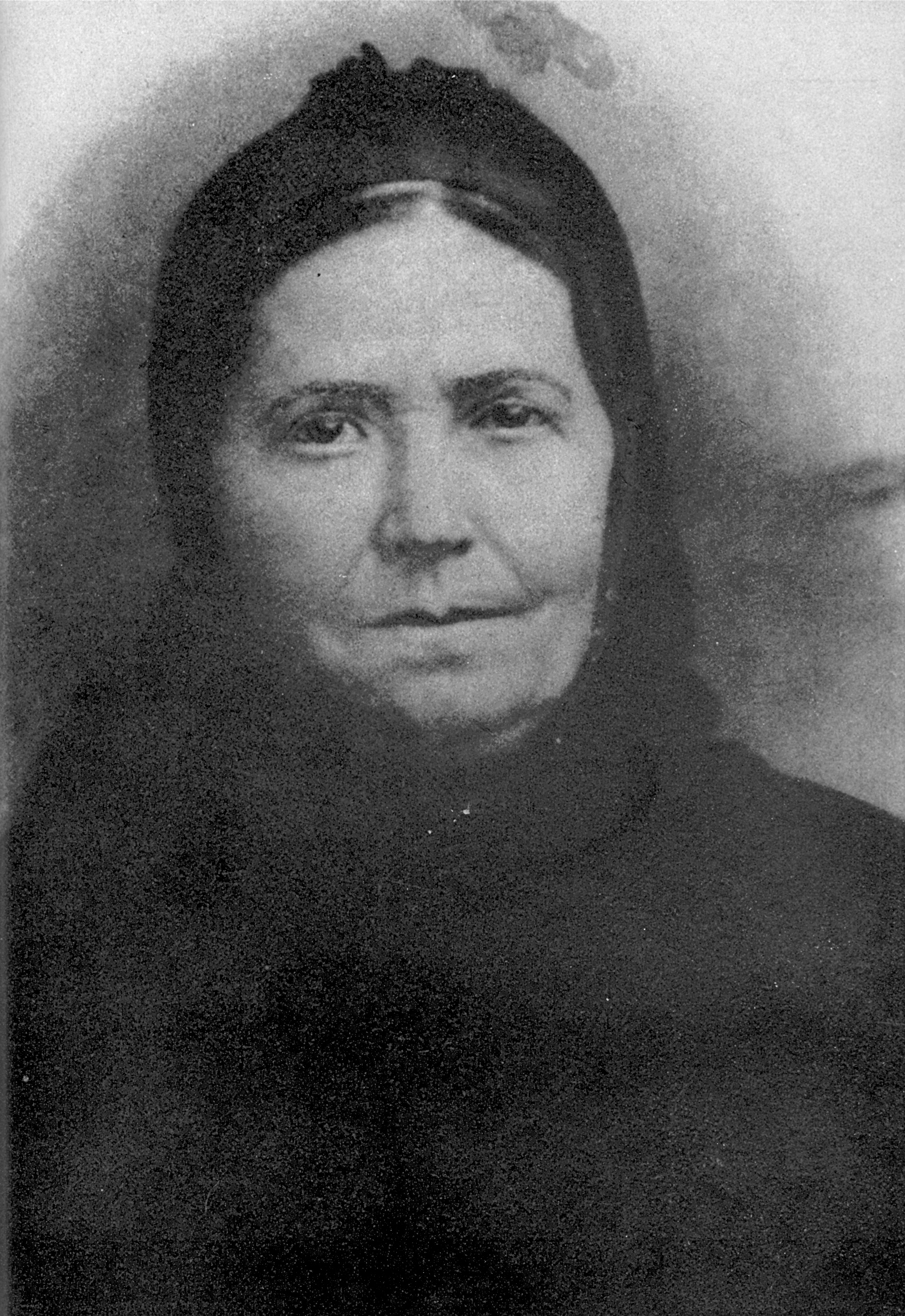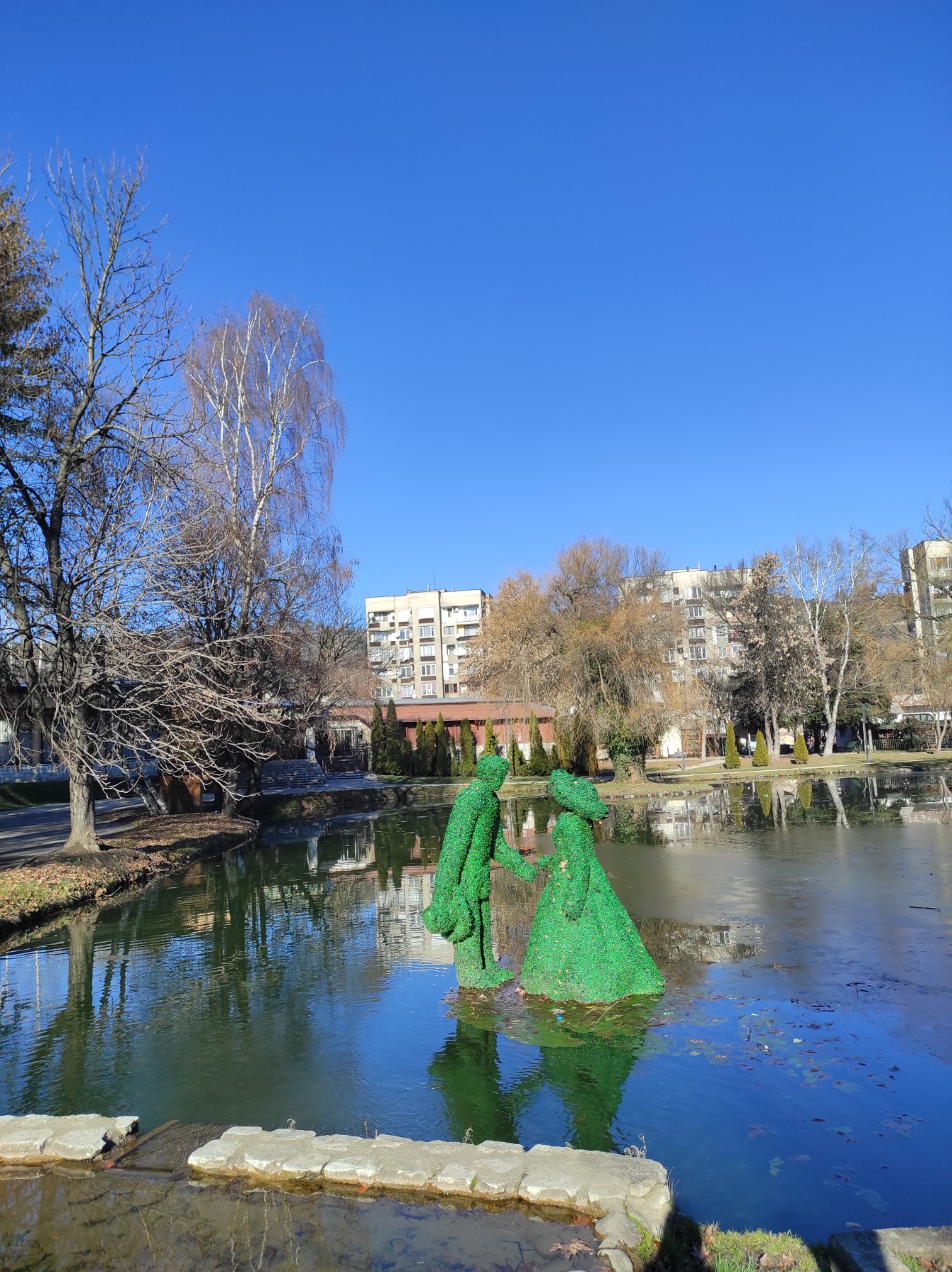|
Sanjak Of Serres
The Sanjak of Siroz or Serres (Ottoman Turkish: ''Sancak-i/Liva-i Siroz''; , ) was a second-level Ottoman province (''sanjak'' or '' liva'') encompassing the region around the town of Serres (Turkish: ''Siroz'', now in Greece) in central Macedonia. History Serres fell to the Ottoman Empire on 19 September 1383, and initially formed a fief of Evrenos Beg, who brought in Yörük settlers from Sarukhan. Although never rising to particular prominence within the Ottoman Empire, Serres became also the site of a mint from 1413/14 on. In the 18th and early 19th centuries, Serres was an autonomous beylik under a succession of derebeys, within the Sanjak of Salonica. Siroz became a regular province by 1846, during the Tanzimat reforms, as a ''sanjak'' of the Salonica Eyalet (later Salonica Vilayet), encompassing the towns of Drama, Melnik, Timurhisar (Sidirokastro), Nevrekop (Gotse Delchev) and Lissa. Drama was created as a separate ''sanjak'' centre shortly after, and by 1912, the ... [...More Info...] [...Related Items...] OR: [Wikipedia] [Google] [Baidu] |
Ottoman Turkish Language
Ottoman Turkish (, ; ) was the standardized register (sociolinguistics), register of the Turkish language in the Ottoman Empire (14th to 20th centuries CE). It borrowed extensively, in all aspects, from Arabic and Persian language, Persian. It was written in the Ottoman Turkish alphabet. Ottoman Turkish was largely unintelligible to the less-educated lower-class and to rural Turks, who continued to use ("raw/vulgar Turkish"; compare Vulgar Latin and Demotic Greek), which used far fewer foreign loanwords and is the basis of the modern standard. The Tanzimat, Tanzimât era (1839–1876) saw the application of the term "Ottoman" when referring to the language ( or ); Modern Turkish uses the same terms when referring to the language of that era ( and ). More generically, the Turkish language was called or "Turkish". History Historically, Ottoman Turkish was transformed in three eras: * (Old Ottoman Turkish): the version of Ottoman Turkish used until the 16th century. It wa ... [...More Info...] [...Related Items...] OR: [Wikipedia] [Google] [Baidu] |
Tanzimat
The (, , lit. 'Reorganization') was a period of liberal reforms in the Ottoman Empire that began with the Edict of Gülhane of 1839 and ended with the First Constitutional Era in 1876. Driven by reformist statesmen such as Mustafa Reşid Pasha, Mehmed Emin Âli Pasha, and Fuad Pasha, under Sultans Abdülmecid I and Abdülaziz, the Tanzimat sought to reverse the empire's decline by modernizing legal, military, and administrative systems while promoting Ottomanism (equality for all subjects). Though it introduced secular courts, modern education, and infrastructure like railways, the reforms faced resistance from conservative clerics, exacerbated ethnic tensions in the Balkans, and saddled the empire with crippling foreign debt. The Tanzimat’s legacy remains contested: some historians credit it with establishing a powerful national government, while others argue it accelerated imperial fragmentation. Different functions of government received reform, were completely reor ... [...More Info...] [...Related Items...] OR: [Wikipedia] [Google] [Baidu] |
Gotse Delchev
Georgi Nikolov Delchev (; ; 4 February 1872 – 4 May 1903), known as Gotse Delchev or Goce Delčev (''Гоце Делчев''),Originally spelled in older Bulgarian orthography as ''Гоце Дѣлчевъ''. - Гоце Дѣлчевъ. Биография. П.К. Яворовъ, 1904. was a prominent Macedonian Bulgarian revolutionary ( komitadji) and one of the most important leaders of what is commonly known as the Internal Macedonian Revolutionary Organization (IMRO), active in the Ottoman-ruled Macedonia and Adrianople regions, as well as in Bulgaria, at the turn of the 20th century. Delchev was IMRO's foreign representative in Sofia, the capital of the Principality of Bulgaria. As such, he was also a member of the Supreme Macedonian-Adrianople Committee (SMAC), participating in the work of its governing body. He was killed in a skirmish with an Ottoman unit on the eve of the Ilinden-Preobrazhenie uprising. Born into a Bulgarian family in Kilkis, then in the Sa ... [...More Info...] [...Related Items...] OR: [Wikipedia] [Google] [Baidu] |
Blagoevgrad
Blagoevgrad ( ) is List of cities and towns in Bulgaria, а town in Southwestern Bulgaria, the administrative centre of Blagoevgrad Municipality and of Blagoevgrad Province. With a population of almost inhabitants, it is the economic and cultural centre of Southwestern Bulgaria. It is located in the valley of the Struma River at the foot of the Rila Mountains, south of Sofia, close to the border with North Macedonia. Blagoevgrad features a pedestrian downtown, with preserved 19th-century architecture and numerous restaurants, cafés, coffee shops, and boutiques. It is home to two universities, the South-West University "Neofit Rilski" and the American University in Bulgaria. The town also hosts the "Sts. Cyril and Methodius National Humanitarian High School". The former Bulgarian Men's High School of Thessaloniki moved from Thessaloniki to Blagoevgrad (then Gorna Dzhumaya) in 1913. Name In Ottoman times the town was known as ''Yukarı Cuma'' in Turkish or ''Gorna Dzhumaya'' in ... [...More Info...] [...Related Items...] OR: [Wikipedia] [Google] [Baidu] |
Petrich
Petrich ( ) is a town in Blagoevgrad Province in southwestern Bulgaria, located in Sandanski–Petrich Valley at the foot of the Belasica Mountains in the Strumeshnitsa Valley. According to the 2021 census, the town has 26,778 inhabitants. It is the seat of Petrich Municipality. Petrich is located close to the borders with Greece and North Macedonia. The crossing into North Macedonia is known as Novo Selo-Petrich, as the first settlement across the border is Novo Selo. Petrich Peak on Livingston Island in the South Shetland Islands, Antarctica is named for Petrich. History Petrich was included in the territory of the Bulgarian State during the reign of Knyaz Boris I (r. 852–889). During the Middle Ages it was a Bulgarian fortress of importance during Tsar Samuil's wars (r. 997–1014) with Byzantium. During Ottoman rule, it formed part of the Rumeli Eyalet, and in the 19th century became a '' kaza'' of the Sanjak of Serres in the Salonica Vilayet. From 19 Ja ... [...More Info...] [...Related Items...] OR: [Wikipedia] [Google] [Baidu] |
Razlog
Razlog ( ) is a town and ski resort in Razlog Municipality, Blagoevgrad Province in southwestern Bulgaria. It is situated in the Razlog Valley and was first mentioned during the reign of Byzantine emperor Basil II. The municipality The municipality of Razlog comprises the villages of Banya, Gorno Draglishte, Dobarsko, Bachevo, Godlevo, and Eleshnitsa with a total population of 20,410. Dobarsko, located on the southern slopes of Rila, is home to several historical landmarks. The Church of Theodore Tyro and Theodore Stratelates is a national monument of culture. The church has an abundance of original murals and frescoes, including ones depicting Jesus Christ in what some observers claim to be a rocket. The icons in the tzar (king) row of the church "Sretenie Gospodne" (1860) were painted by Simeon D. Molerov, a representative of the Bansko Painting School. History During his 1894–1896 trip in the region of Macedonia, Bulgarian geographer Vasil Kanchov visited Razlog ... [...More Info...] [...Related Items...] OR: [Wikipedia] [Google] [Baidu] |
Nea Zichni
Nea Zichni () is a municipality in the Serres regional unit, of Central Macedonia region, Greece. Population 8,267 (2021). Nea Zichni is also the name of the administrative seat of the municipality, population 1,547 (2021). History The city was originally built next to the marches of Lake Achinos, on the hill of "Toumba" (2 km south of Nea Zichni) and it was called Ichna (). It was a Paionian city, that was sometime in the 5th or early 4th century BC incorporated into the Macedonian Kingdom. Another city by the same name Ichna is mentioned by Thucydides being next to Pella, by the estuary of the Loudias and Axios rivers. The name Ichna is a Paionian cognate of the Greek word "ichnos" () which means "stepping ground" a name appropriate for a city built on the sand between the marsh and the lake (or the sea). The original Ichna remained a city throughout the Hellenistic, Roman and Byzantine eras, only to be destroyed and was rebuilt far from the lake in its original position o ... [...More Info...] [...Related Items...] OR: [Wikipedia] [Google] [Baidu] |
Kaza
A kaza (, "judgment" or "jurisdiction") was an administrative divisions of the Ottoman Empire, administrative division of the Ottoman Empire. It is also discussed in English under the names district, subdistrict, and juridical district. Kazas continued to be used by some of the empire's successor states. At present, they are used by administrative divisions of Iraq, Iraq, administrative divisions of Lebanon, Lebanon, Administrative divisions of Jordan, Jordan, and in Arabic language, Arabic discussion of Administrative divisions of Israel, Israel. In these contexts, they are also known by the Arabic name qada, qadā, or qadaa (, ). Former use Ottoman Empire In the Ottoman Empire, a kaza was originally equivalent to the kadiluk, the district subject to the legal and administrative jurisdiction of a kadi (Ottoman Empire), kadi or judge of Islamic law. This usually corresponded to a major city of the empire with its surrounding villages. A small number of kazas made up each sanjak ( ... [...More Info...] [...Related Items...] OR: [Wikipedia] [Google] [Baidu] |
Sanjak Of Drama
The Sanjak of Drama (Ottoman Turkish: ''Sancak-i/Liva-i Drama''; ) was a second-level Ottoman province (''sanjak'' or '' liva'') encompassing the region around the town of Drama (now in Greece) in eastern Macedonia. The ''sanjak'' was formed as part of the Tanzimat reforms ca. 1846, from territory taken from various provinces; Drama itself belonged to the Sanjak of Siroz. The ''sanjak'' belonged to the Salonica Eyalet, after 1867 the Salonica Vilayet. In 1867–69, the Sanjak of Drama was merged back into the Sanjak of Siroz, was re-established and then temporarily abolished in 1872–73. In 1891, its territories east of the Nestos river became part of the Sanjak of Adrianople. In 1912, the ''sanjak'' comprised six sub-provinces (''kazas''): Drama, Kavala, Sarışaban ( Chrysoupoli), the island of Taşuz (Thasos) and Pravişte ( Eleftheroupolis). The province was dissolved when occupied by Bulgarian troops in the First Balkan War, and in 1913, after the Second Balkan War, it ... [...More Info...] [...Related Items...] OR: [Wikipedia] [Google] [Baidu] |
Gotse Delchev, Blagoevgrad Province
Gotse Delchev ( ), List of cities and towns in Bulgaria, is a town in Gotse Delchev Municipality in Blagoevgrad Province of Bulgaria. In 1951, the town was renamed after the revolutionary leader Gotse Delchev. It had hitherto been called Nevrokop (in , ; in ; and in ). Nearby are the remains of a walled city established by the Roman Empire, Romans in the 2nd century AD. The town was a township, kaza in the Sanjak of Siroz, Siroz sanjak of the Salonica vilayet before the Balkan Wars. Geography Gotse Delchev is situated in a mountainous area, about from the capital Sofia and from the city of Blagoevgrad in the southern part of Blagoevgrad district. The town center is Above mean sea level, above sea level. The Gotse Delchev Hollow is characterized by a continental climate; rainfall occurs mainly during spring and autumn, and summers are hot and dry. Winter temperature inversions are possible. Population History Antiquity and medieval period Nicopolis ad Nestum was one of tw ... [...More Info...] [...Related Items...] OR: [Wikipedia] [Google] [Baidu] |
Sidirokastro
Sidirokastro (; ) is a town and a former municipality in the Serres regional unit, Greece. Since the 2011 local government reform it is part of the municipality Sintiki, of which it is the seat and a municipal unit. It is built near the fertile valley of the river Strymonas, on the bank of the Krousovitis River. It has a number of tourist sights, such as the medieval stone castle, Byzantine ruins, and natural spas. General information Sidirokastro is located 25 km to the northwest of the town of Serres, between the Vrontous and Angistro mountains (to the north) and the river Strymonas (to the west). The 2021 census recorded 7,937 residents in the municipal unit of Sidirokastro, while there were 5,181 residents recorded in the community of Sidirokastro. The municipal unit has an area of 196.554 km2. The town is crossed by the Krousovitis River, one of the Strymonas' tributaries, which divides the town into two sections. These sections are connected by two bridge ... [...More Info...] [...Related Items...] OR: [Wikipedia] [Google] [Baidu] |
Melnik, Bulgaria
Melnik ( , , ''Meleniko'') List of cities and towns in Bulgaria, is a town in Blagoevgrad Province, Southwestern Bulgaria, in the Southwestern Pirin Mountains, about 440 m above sea level. The town is an architectural reserve and 96 of its buildings are cultural monuments. With a population of 385, it is the smallest town in Bulgaria, retaining its town status today for historical reasons. It is situated on the foothills of the Pirin mountain range and is overlooked by the Melnik Earth Pyramids. History According to archaeological evidence, the first to settle in the area were the Thracians, Thracian tribe ''Medi'' to which the famous rebel Spartacus belonged. Centuries later, the presence of the Ancient Rome, Romans left the town one of its landmarks — the Ancient Roman bridge, which is still preserved. The region was infused by Greek culture and later became part of the Byzantine Empire. The Slavs who later came in these parts named the settlement ''Melnik'' after the san ... [...More Info...] [...Related Items...] OR: [Wikipedia] [Google] [Baidu] |







